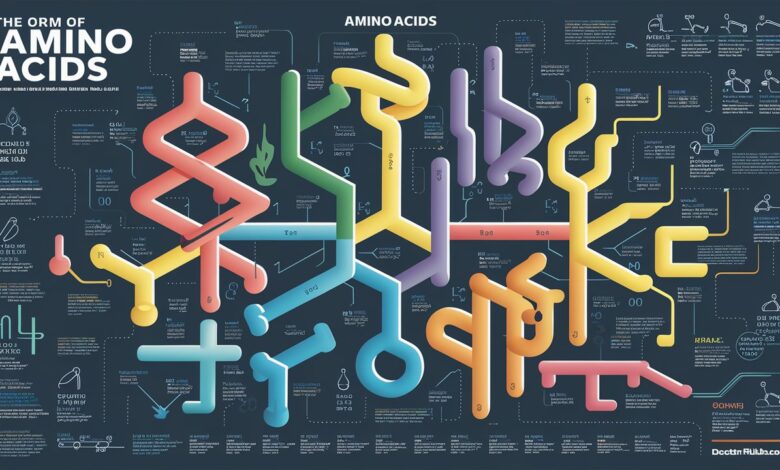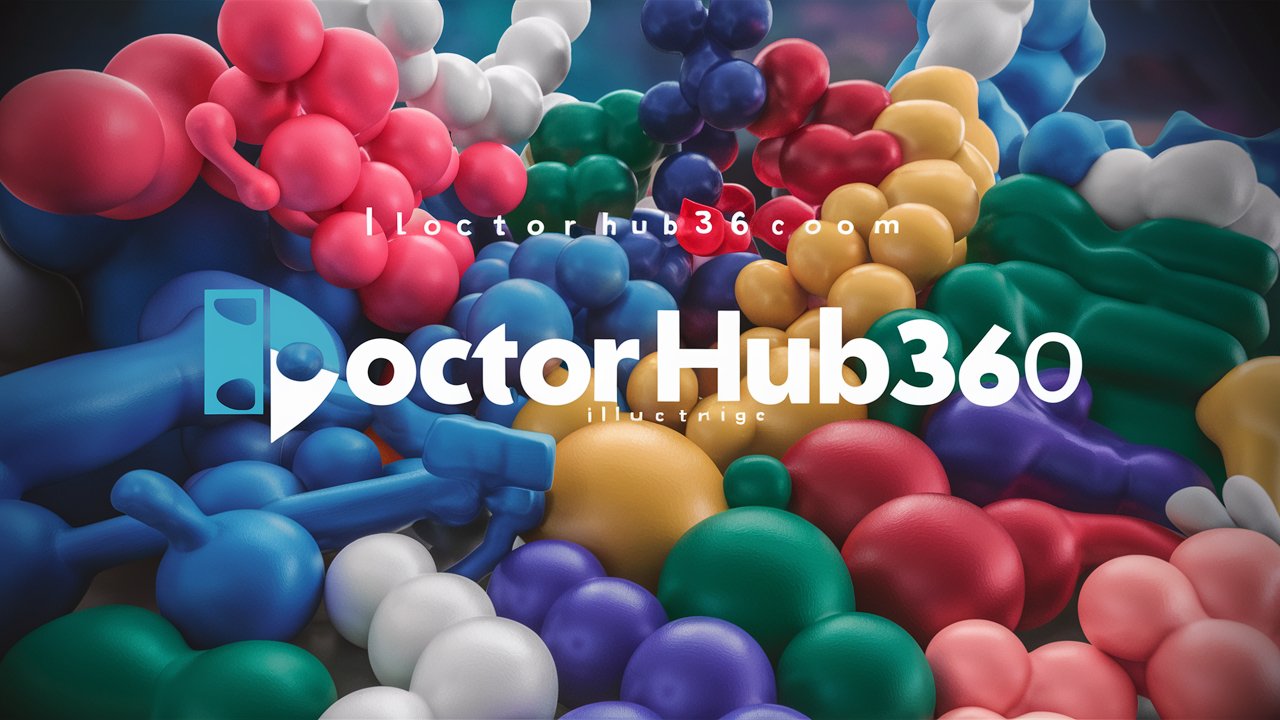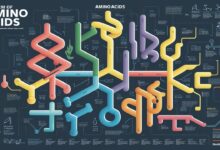Amino Acids: The Building Blocks of Life and Health | DoctorHub360 Expert Guide

Amino acids are the molecular foundation of life, powering everything from muscle growth to brain function. Often referred to as the “building blocks of proteins,” these organic compounds play a critical role in maintaining human health, yet their complexity and diversity are frequently misunderstood. At DoctorHub360, we aim to demystify amino acids, exploring their types, functions, dietary sources, and their profound impact on wellness. Whether you’re an athlete optimizing performance, a patient managing a health condition, or simply curious about nutrition, this comprehensive guide will illuminate why amino acids deserve your attention. Let’s dive into the science, benefits, and practical applications of these essential molecules.
What Are Amino Acids?
Amino acids are organic compounds composed of carbon, hydrogen, oxygen, and nitrogen, with some containing sulfur. They combine in unique sequences to form proteins, which are indispensable for cellular structure, enzyme production, and metabolic processes. There are 20 standard amino acids, each with a distinct side chain (R-group) that determines its chemical properties and biological role. For instance, glycine has a simple hydrogen side chain, making it small and flexible, while tryptophan contains a complex aromatic ring, influencing its role in neurotransmitter synthesis. Without amino acids, critical bodily functions like tissue repair, hormone regulation, and immune response would collapse.
Essential vs. Non-Essential Amino Acids: What’s the Difference?
Amino acids are categorized into three groups: essential, conditionally essential, and non-essential. Essential amino acids (EAAs)—such as leucine, valine, and lysine—cannot be synthesized by the body and must be obtained through diet. These are vital for processes like muscle protein synthesis and immune health. Non-essential amino acids, like glutamine and alanine, are produced internally, even if not consumed directly. Conditionally essential amino acids (e.g., arginine and cysteine) become indispensable during stress, illness, or aging when the body’s production falls short. Understanding this classification helps tailor nutrition plans for specific needs, such as post-surgery recovery or managing chronic diseases.
The Role of Amino Acids in the Human Body
Amino acids are multitaskers, influencing nearly every physiological system. Protein synthesis is their most well-known role, enabling the creation of structural proteins like collagen (for skin and joints) and functional proteins like hemoglobin. Beyond this, they act as precursors for neurotransmitters: tyrosine fuels dopamine production, while tryptophan is converted into serotonin, regulating mood and sleep. Certain amino acids, like glutamine, support gut health by maintaining intestinal lining integrity, while others, such as cysteine, boost antioxidant defenses through glutathione synthesis. They also regulate energy metabolism; for example, branched-chain amino acids (BCAAs) are oxidized during exercise to fuel muscles.

Health Benefits of Amino Acids: From Muscle Growth to Mental Wellness
The benefits of amino acids extend far beyond basic nutrition. For athletes and fitness enthusiasts, BCAAs (leucine, isoleucine, valine) stimulate muscle protein synthesis, reduce exercise fatigue, and accelerate recovery. Mental health is another frontier: GABA (gamma-aminobutyric acid) calms the nervous system, alleviating anxiety, while phenylalanine is a precursor to adrenaline, enhancing focus. Clinically, amino acids like arginine improve cardiovascular health by promoting nitric oxide production, which dilates blood vessels. Meanwhile, methionine supports liver detoxification, and histidine plays a role in managing allergic responses. Emerging research even links amino acid imbalances to conditions like depression and metabolic syndrome.
Dietary Sources of Amino Acids: Balancing Your Intake
A balanced diet rich in complete proteins (containing all EAAs) is key to optimal amino acid intake. Animal-based foods—such as eggs, poultry, fish, and dairy—are excellent sources. For instance, whey protein is lauded for its high leucine content, crucial for muscle repair. Plant-based eaters can combine foods like quinoa (a complete protein), beans, and nuts to ensure EAA adequacy. Supplements like collagen peptides or EAA blends are popular for filling gaps, especially among vegans or older adults with reduced protein absorption. However, over-reliance on processed supplements can lead to imbalances—natural food sources often provide synergistic nutrients like vitamins and minerals.
Amino Acid Supplementation: Who Needs It?
While most people meet their needs through diet, supplementation can benefit specific populations. Athletes may use BCAAs to enhance endurance, while post-surgical patients might require extra arginine to accelerate wound healing. Vegans often supplement with lysine, which is scarce in plant proteins, to prevent deficiencies. Conditionally essential amino acids like glutamine are popular among those with digestive disorders to repair gut lining. However, indiscriminate use can pose risks: excessive methionine may increase homocysteine levels (a cardiovascular risk factor), while tyrosine supplements might exacerbate hypertension. Always consult a healthcare provider before starting supplementation.
Amino Acids and Chronic Disease: Emerging Research
Recent studies highlight amino acids’ role in managing chronic diseases. For example, taurine shows promise in regulating blood sugar and protecting against diabetic complications, while carnitine aids fat metabolism in cardiovascular patients. Imbalances in aromatic amino acids (phenylalanine, tyrosine) are linked to neurodegenerative diseases like Parkinson’s. Conversely, glutamate excess is associated with neurotoxicity, underscoring the need for balance. Researchers are also exploring how modulating amino acid intake could starve cancer cells or enhance chemotherapy efficacy. These findings position amino acids as potential therapeutic targets, though further clinical trials are needed.
Conclusion
Amino acids are far more than just components of protein—they are dynamic molecules shaping our health at every level. From powering physical performance to safeguarding mental clarity, their influence is unparalleled. At DoctorHub360, we emphasize the importance of understanding your unique amino acid needs, whether through diet, supplementation, or medical guidance. As science continues to unravel their complexities, one truth remains clear: prioritizing these building blocks of life is a cornerstone of holistic wellness.
Frequently Asked Questions (FAQs)
Q1: Can amino acid supplements replace a protein-rich diet?
While supplements can address specific deficiencies, whole foods provide a broader spectrum of nutrients and co-factors that enhance absorption. Use supplements as a complement, not a replacement.
Q2: Are there risks of consuming too many amino acids?
Excessive intake, particularly of isolated amino acids, can disrupt metabolic balance. For example, high doses of tryptophan may cause serotonin syndrome, while surplus BCAAs might strain kidneys. Moderation is key.
Q3: How do I know if I have an amino acid deficiency?
Symptoms include fatigue, muscle wasting, poor immunity, and mood swings. Blood tests or amino acid panels can diagnose deficiencies, often linked to poor diet or malabsorption disorders.
Q4: Are plant-based proteins sufficient for amino acid needs?
Yes, but variety is crucial. Combine legumes, grains, and seeds to ensure all EAAs are consumed. Lentils with rice or hummus with whole-grain pita are classic examples.
Q5: Can amino acids improve skin health?
Absolutely! Proline and glycine in collagen support skin elasticity, while cysteine aids keratin production for stronger hair and nails.
